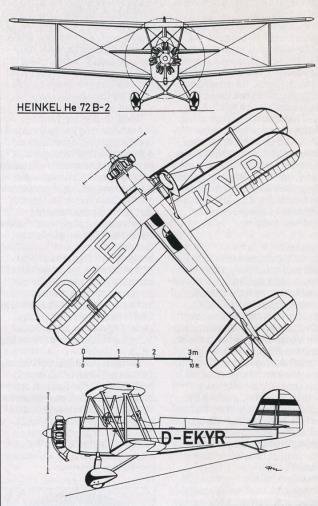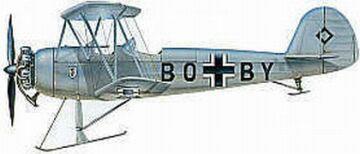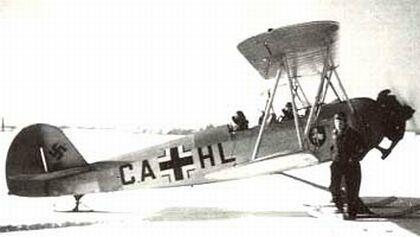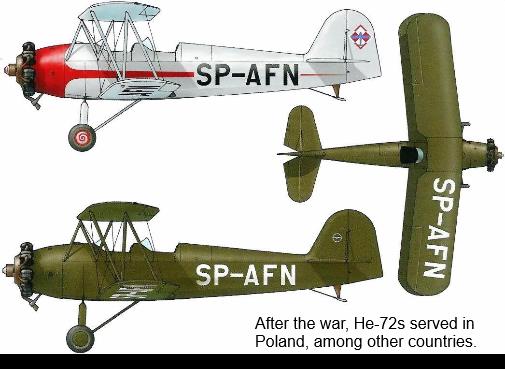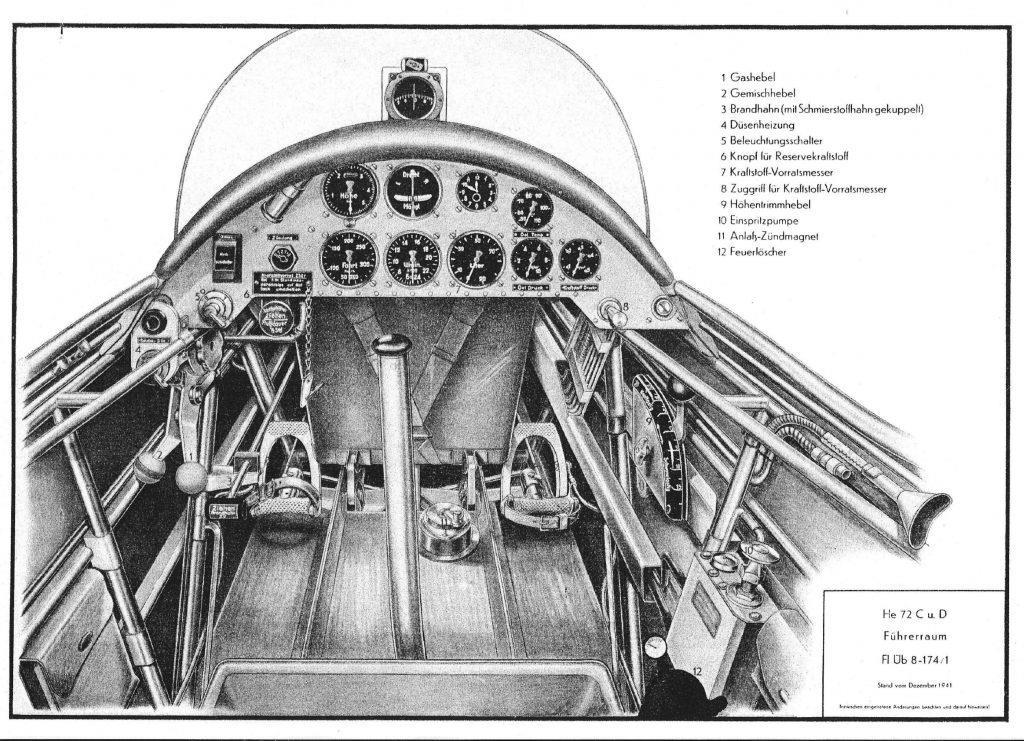| Type |
B-1 2-seat trainer |
A 2-seat trainer
|
B-1w 2-seat trainer, seaplane
|
B-2 2-seat trainer |
| Engine |
1 Siemens-Halske Sh 14A . With 2-bladed fixed-pitch propeller, 2.2 m diameter |
1 Argus As 8B, With 2-bladed fixed-pitch propeller, 2.2 m diameter
|
1 Siemens-Halske Sh 14A-4 . With 2-bladed fixed-pitch propeller, 2.2 m diameter |
1 Siemens-Halske Sh 14A-4 . With 2-bladed fixed-pitch propeller, 2.2 m diameter |
| Dimensions |
Length 7,5 m , height 2,7 m , span 9,0 m , wing area 20,7 m2 , |
Length 7,5 m , height 2,7 m , span 9,0 m , wing area 20,7 m2 , |
Length 7,9 m , height 3,27 m , span 9,0 m , wing area 20,7 m2 ,
|
Length 7,5 m , height 2,7 m , span 9,0 m , wing area 20,7 m2 , |
| Weights |
Empty 540 kg, loaded , max. take off weight 865 kg , fuel 110 l, oil 11 l |
Empty 590 kg, loaded , max. take off weight 900 kg , fuel 110 l, oil 11 |
Empty 620 kg, loaded , max. take off weight 950 kg , fuel 110 l, oil 11 |
Empty 590 kg, loaded , max. take off weight 900 kg , fuel 110 l, oil 11 |
| Performance |
Max.. speed 194 km/h at 1000 m, cruising speed 158 km/h, landing speed 80 km/h, range 820 km, endurance , service ceiling 4200 m , climb 3,0 m/sec., to 2000 m 14 min. |
Max.. speed 183 km/h at sea level, cruising speed 150 km/h, landing speed 80 km/h, range 550 km, endurance , service ceiling 3500 m , climb to 1000 m 6 min., requered runway 180 m |
Max.. speed 183 km/h at 1000 m, cruising speed 152 km/h, landing speed 80 km/h, range 475 km, endurance , service ceiling 3800 m , climb to 1000 m 5 min 12 sec.., requered runway 180 m |
Max.. speed 194 km/h at 1000 m, 180 km/h at sea level, 180 km/h at 2000 m, 170 km/h at 3000 m, cruising speed 158 km/h, landing speed 80 km/h, range 820 km, endurance , service ceiling 4300 m , requered runway 175 m |
